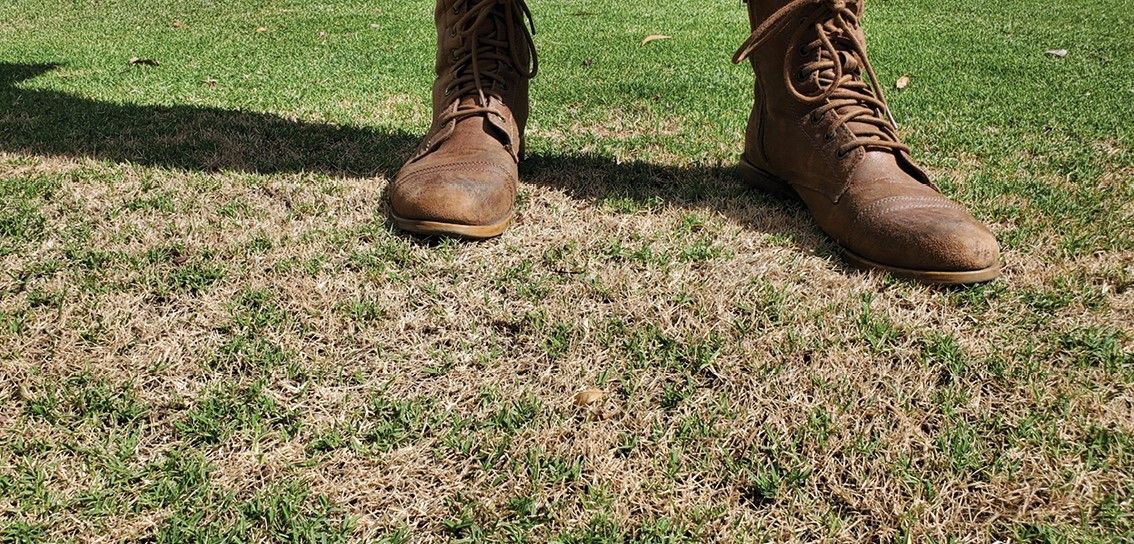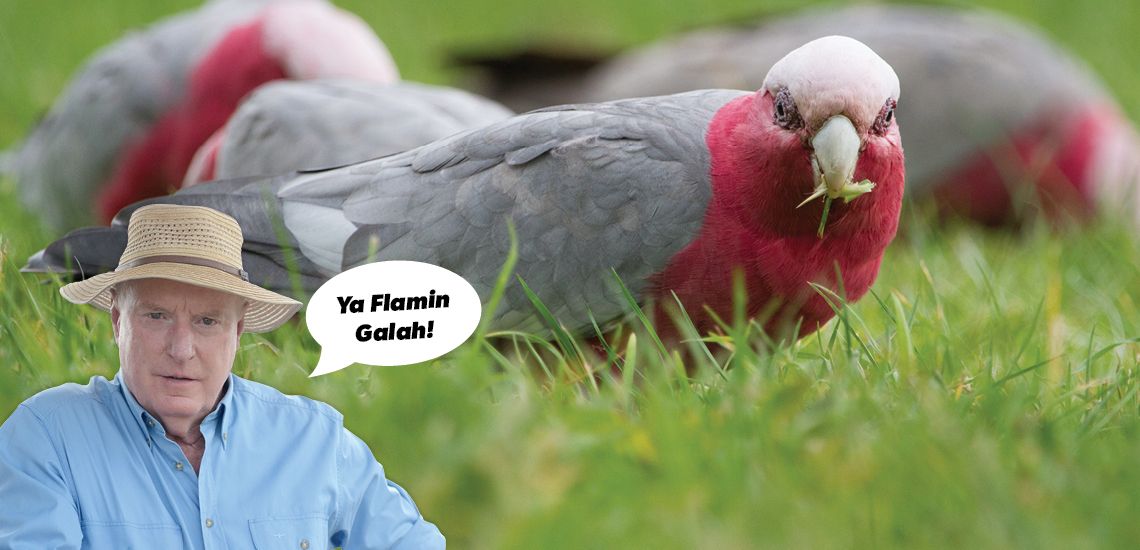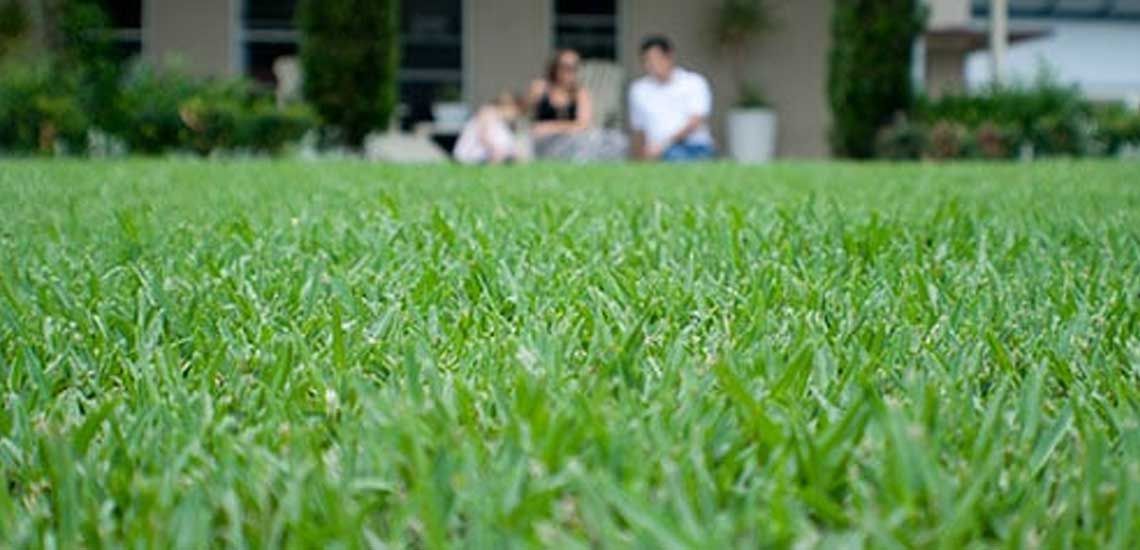
Does your lawn have dry spots?
Hot and dry weather can really take a toll on even the healthiest lawns and cause them to become thin and patchy. This usually happens over the summer months, as the weather is hot and dry and lawn owners are generally on holidays or too busy to keep up their regular lawn maintenance schedule. It only takes a couple of days of hot, dry weather to affect your lawn.
Usually what you will see is bare patches throughout the lawn or your lawn would’ve started to thin out and change colour. What follows this, is those bare patches bake in the sun and become rock hard making it difficult for water and nutrients to get into the soil. This is commonly known as dry patch and appears regularly in lawns throughout the summer. Thankfully it is treatable and is relatively easy to fix.
First things first, it is always recommended you aerate the affected area of your lawn. Aeration can be done with a garden fork, aerator sandals or a specialised aerator depending on the size of the lawn. This is crucial as it will de-compact your soil and will help nutrients and water penetrate your lawn.
Next, apply a wetting agent to the affected area. Wetting agents come in liquid and granular forms and assist with water absorbing into your soil. This will also allow the soil to hold water in a usable manner for longer. Always remember to irrigate your lawn well after applying the wetting agent.
After this, it is time to stimulate your lawns growth to allow it to self-repair and cover back over. This is best done by applying an NPK fertiliser to the entire lawn and irrigating the lawn well afterwards. Always remember to apply all products at label rates and follow all instructions.
There are steps you can take to reduce the suffering.
- Choose a drought tolerant variety.
- Carry out good soil improvement practices prior to installing.
- Water your lawn correctly, less frequent, deeper soakings to encourage deep roots.
- If possible, give your lawn one deep soaking at the first sign of any heat and drought and then leave it until it starts to wilt, repeating the process as necessary. This will be more frequent in sandy soils.
- Increase the mowing height – slightly longer lawns shade the soil, reducing evaporation and stress.
Local councils continue to increase water restriction levels, with many of these water restrictions impacting on home-owners ability to water their lawns.
Always check and abide by the relevant water restrictions in your area as these vary greatly around the country.

Active Turf Supplies
684 & 736 Kurmond Road
Freemans Reach NSW 2756

Popular Articles

Why should you choose Active Turf?






